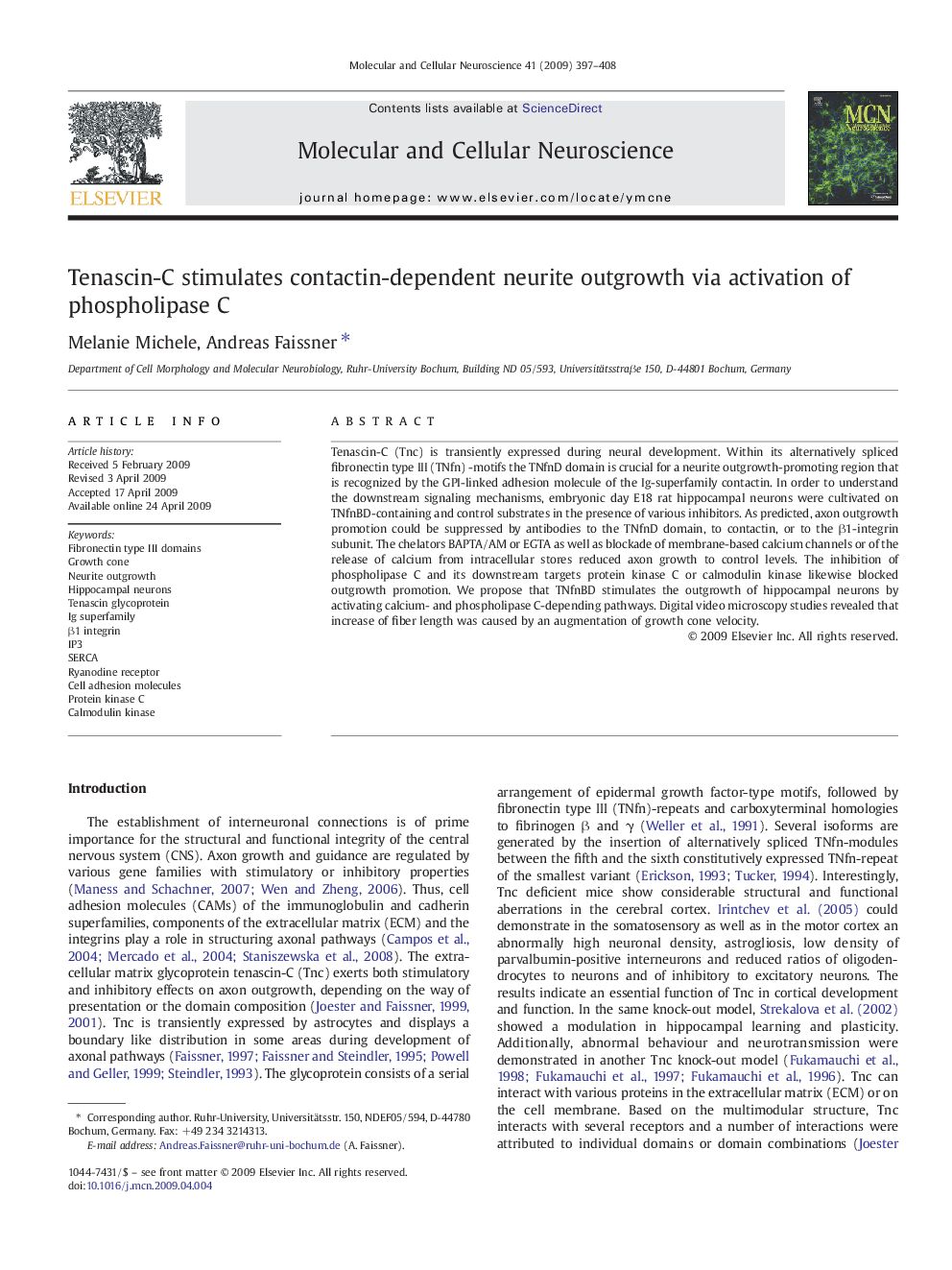| Article ID | Journal | Published Year | Pages | File Type |
|---|---|---|---|---|
| 2198914 | Molecular and Cellular Neuroscience | 2009 | 12 Pages |
Tenascin-C (Tnc) is transiently expressed during neural development. Within its alternatively spliced fibronectin type III (TNfn) -motifs the TNfnD domain is crucial for a neurite outgrowth-promoting region that is recognized by the GPI-linked adhesion molecule of the Ig-superfamily contactin. In order to understand the downstream signaling mechanisms, embryonic day E18 rat hippocampal neurons were cultivated on TNfnBD-containing and control substrates in the presence of various inhibitors. As predicted, axon outgrowth promotion could be suppressed by antibodies to the TNfnD domain, to contactin, or to the β1-integrin subunit. The chelators BAPTA/AM or EGTA as well as blockade of membrane-based calcium channels or of the release of calcium from intracellular stores reduced axon growth to control levels. The inhibition of phospholipase C and its downstream targets protein kinase C or calmodulin kinase likewise blocked outgrowth promotion. We propose that TNfnBD stimulates the outgrowth of hippocampal neurons by activating calcium- and phospholipase C-depending pathways. Digital video microscopy studies revealed that increase of fiber length was caused by an augmentation of growth cone velocity.
